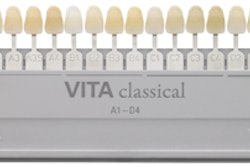Uncertainty surrounds the need for lateral cephalometric radiographs in orthodontic treatment planning, according to a new study in the American Journal of Orthodontics & Dentofacial Orthopedics (February 2011, Vol. 139:2, pp. e175-e181).
A team of U.K. researchers compared the odds of a change in treatment plan by three groups of orthodontists who planned six cases on two occasions (T1 and T2), with the provision of a lateral cephalometric radiograph being varied.
The records of six orthodontic patients were copied onto compact disks and sent to the 199 participating orthodontists. Clinicians in group A were given all records except the lateral cephalometric radiographs at the T1 and T2 planning sessions. Clinicians in group B were given all records except the lateral cephalometric radiograph at T1 and all records including the lateral cephalometric radiograph and tracing at T2. Clinicians in group C were given all records including the lateral cephalometric radiographs and tracings at T1 and T2.
All participants were sent records at T1; those who returned the treatment-planning questionnaire were sent the second set of records and questionnaire at T2 (eight weeks later). Invitations to participate were distributed to all specialist orthodontists who were members of the British Orthodontic Society (n = 950). Of these, 199 orthodontists agreed to take part, a response rate of 21%, the researchers noted.
The availability of a lateral cephalometric radiograph and its tracing did not make a significant difference to any treatment-planning decisions, with the exception of the decision to extract or not between groups B and C for all six patients combined, and between groups B and C and groups B and A for patient 4, the researchers reported.
"For most treatment-planning decisions in these six patients, the availability of a lateral cephalometric radiograph and its tracing did not make a significant difference to the treatment decisions," they wrote.
This highlights the uncertainty surrounding the necessity for lateral cephalometric radiographs in treatment planning, they added, noting that "further research in this area is encouraged to resolve this dichotomy."



















